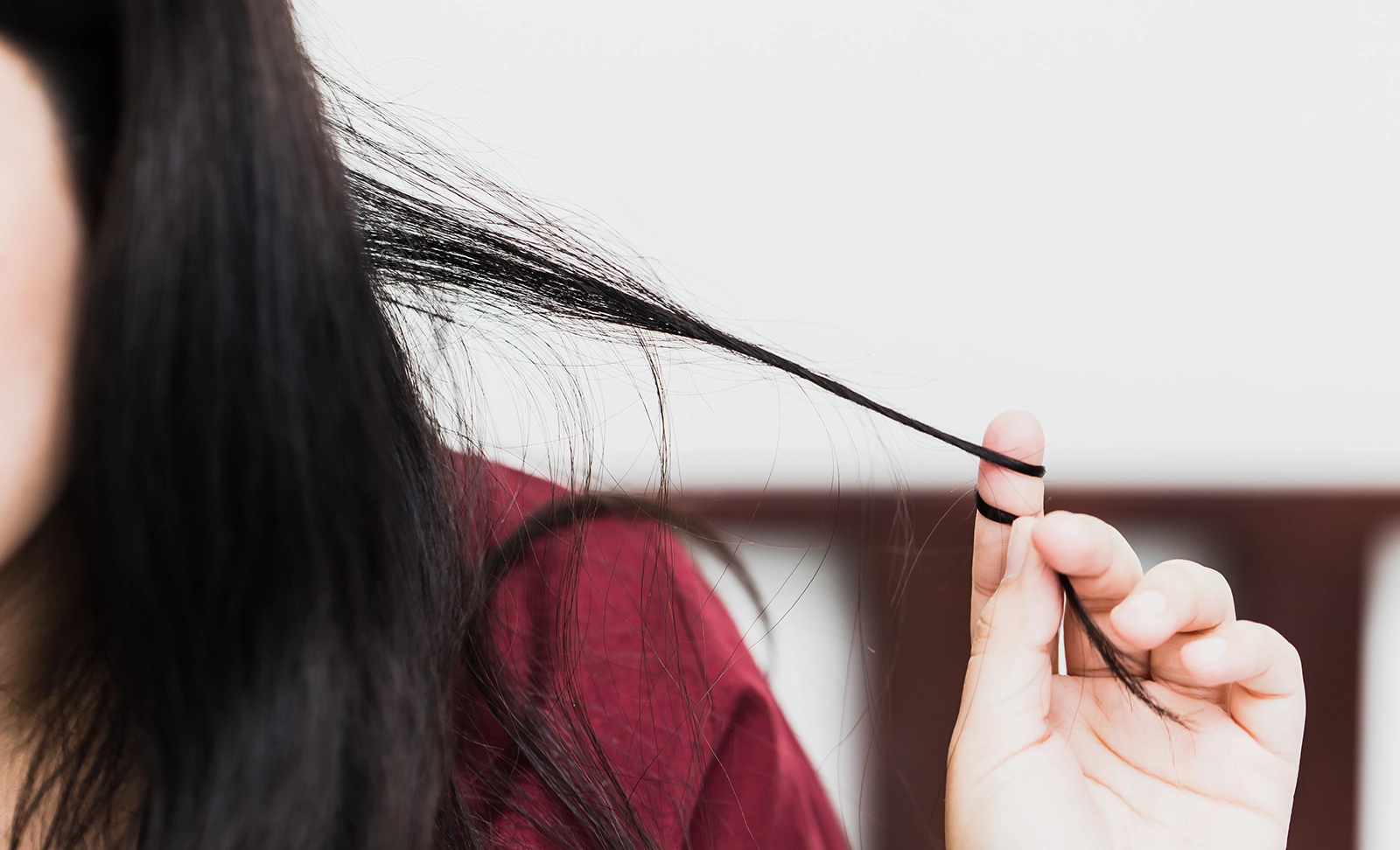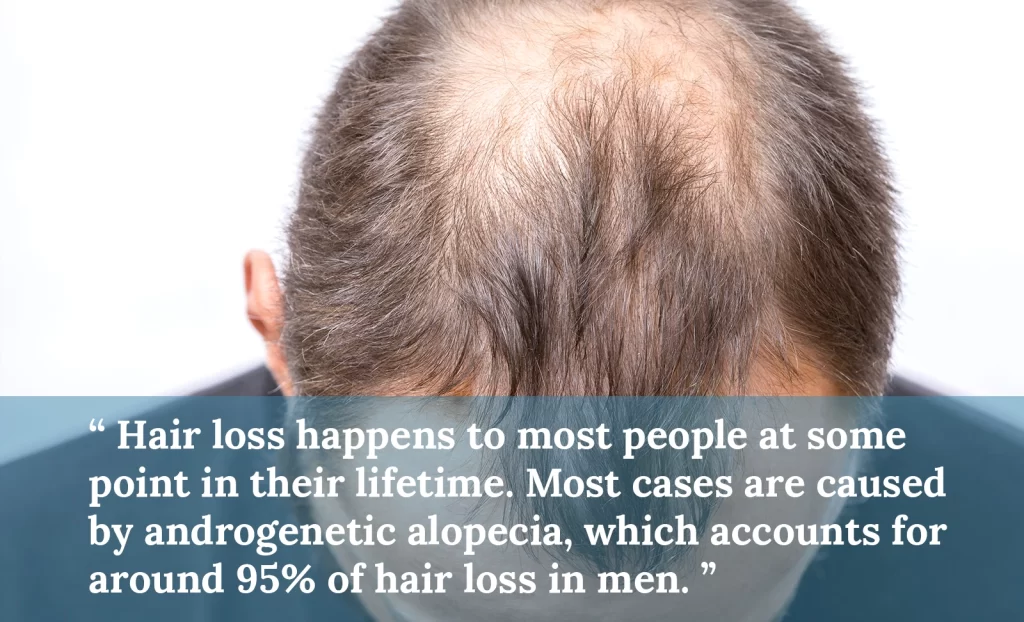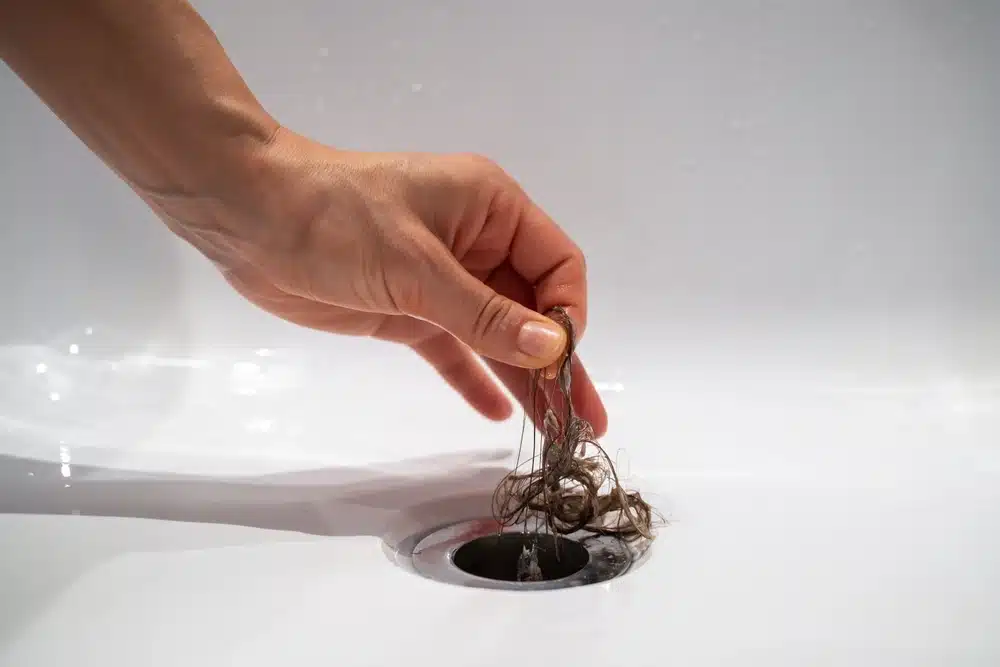Trichotillomania is a type of mental health disorder that can lead to large patches of hair loss, and this is because it causes an individual to pull at their own hair strands. Treating trichotillomania often involves mental health treatment, but there are also hair loss treatments that can help individuals regrow their strands.
- What Causes Trichotillomania?: There is not a single exact cause of trichotillomania. There are several factors that can influence it, including genetics, stress, other mental health disorders, and environmental factors.
- Who Does Trichotillomania Affect the Most?: Trichotillomania is more common in teenagers and young adults. It typically starts when a person is between the ages of ten and thirteen. It affects both girls and boys at this stage, but in young adults, it’s more common in women than men.
- How Do You Treat Trichotillomania?: There are several types of therapies to help treat trichotillomania, including habit reversal training and cognitive behavioural therapy. In terms of treating hair loss, this might include medications such as minoxidil and finasteride.
- Can You Cure Trichotillomania?: While there isn’t a specific cure, trichotillomania can be managed, and many individuals who had trichotillomania when they were young are able to manage the symptoms and stop the hair pulling.
Hair loss happens to most people at some point in their lifetime. Most cases are caused by androgenetic alopecia, which accounts for around 95% of hair loss in men. [1] However, there are other less common causes that may lead to the hair falling out, including mental health conditions like trichotillomania.
In this article, discover the best ways to regrow your hair after trichotillomania.
What is Trichotillomania?
Trichotillomania, also known as hair pulling disorder, TTM, or trich, is a mental health condition that causes a person to pull out their hair from their scalp, eyebrows, eyelashes, and other places on the body. It feels near impossible to stop pulling, and pulling the hair often releases a build-up of tension or stress. There is no clear cause of trichotillomania, but medical experts believe it could be due to chemical imbalances, hormonal changes, and genetics. It can also worsen over time – people who start pulling their hair to deal with stress will likely find the urge increases the more they do it.
Trichotillomania usually starts quite early, between the ages of 10 to 13 years old. [2] It’s essential to get the condition under control as soon as possible, as an earlier diagnosis can lead to a better outcome. Plus, there are risks involved with trichotillomania – not only does it lead to hair loss, but it can cause skin infections, a build-up of hair in the digestive tract, and worsening mental health.
Treating Trichotillomania Hair Pulling Disorder
The first step to treating trichotillomania is visiting your doctor – there, you can get started on a treatment plan. The most common type of treatment is CBT (cognitive behavioural therapy), which aims to change the way a patient thinks, feels, and behaves through regular therapy sessions with a professional. It can be highly effective, especially when combined with medication. Medication typically prescribed for trichotillomania includes propranolol and amitriptyline.
CBT and prescriptive medications aim to treat the underlying mental health condition, which is very important. However, many trichotillomania patients are also concerned about regrowing their hair, as hair loss can seriously affect confidence.
Topical Trichotillomania Treatments
Your doctor can prescribe topical treatments that may help regrow the hair, including corticosteroids. This medication aims to stop the immune system from attacking the hair follicles, which can then lead to healthy hair growth. Other topical treatments include anti-inflammatory shampoos and steroids.
Start a Gentle Hair Care Routine
First thing first: start a hair care routine that nourishes both the scalp and your strands. Find a gentle shampoo and conditioner and consider using hair-boosting hair oils, such as castor oil, rosemary oil, or pumpkin seed oil. You can also massage your scalp regularly, as this stimulates the hair follicles and encourages regrowth.
Manage Your Stress
Managing your stress is not as easy as it sounds, but it’s helpful for regrowing the hair, as too much stress can prevent hair growth and encourage the urge to pull at your strands. It helps to start small – for example, you could devise a daily routine that manages your time more effectively. Then, start a hobby that helps you release stress, such as playing a sport, swimming, hiking, or painting – there are many options! Other stress-relieving habits include meditation and spending time in nature.
Take Supplements
Some supplements can help regrow the hair, especially if you are deficient in something. There are plenty of good hair restoration supplements out there, many including ingredients like biotin, vitamin A, and zinc. You could also get a blood test done at a doctor’s practice to see if you have any deficiencies slowing hair regrowth.
Hide the Hair Loss
While using a hair loss treatment, consider hiding the hair loss to boost your confidence, as this will help you resist the urge to keep pulling by managing your stress levels. The good news is there are lots of ways to hide hair loss:
Wigs and Hair Pieces: Wigs and hair pieces have come a long way over the years; nowadays, you can find hair pieces that look just as natural as your own hair. Consider wearing a hair or wig piece to hide any bald spots.
Hair Concealers: There are plenty of excellent hair concealers that can hide bald or thinning patches, such as L’Oreal Paris Magic Root Cover-Up. This lightweight product can be placed wherever you have experienced hair loss to give the effect of fuller hair.
Strategic Hairstyles: If your hair loss is not too extensive, you can use a strategic hairstyle to cover it up. For example, a well-placed parting may be able to hide a bald spot on one side of your head.
Wear False Eyelashes: If you have pulled out your eyelashes, you can wear false eyelashes until they grow back (or continuously if they don’t). There are several options here – there are individual lashes you can apply with glue, strip lashes that you also apply with glue, and semi-permanent lash extensions.
Consider Hair Tattoos: Hair tattoos can be helpful in concealing hair loss where the hair is very short. For example, microblading the eyebrows is very popular and can help hide hair loss from pulling out the eyebrows.
Use a Hair Loss Medication
There are several effective hair loss medications to help encourage hair growth after trichotillomania hair loss. These include:
Minoxidil: Minoxidil is a hair loss medication you typically apply topically, although you can get it as an oral medication. You can purchase minoxidil over the counter, and it works for men and women alike. Minoxidil works by increasing the blood flow to the hair follicles, which in turn boosts hair growth. It needs to be applied at least once per day, and it takes several months for results to show.
Finasteride: Finasteride is an oral medication typically prescribed to men experiencing an enlarged prostate. It can also help men regrow their hair by blocking the production of DHT, a hormone that leads to hair loss. You’ll need a prescription for this.
Try Low-Level Laser Therapy
Low-level laser therapy is a good option for stimulating hair growth, and you can either do it yourself with a home device or book an appointment at a clinic. Low-level laser therapy works by stimulating the hair follicles with light wavelengths, encouraging the growth phase of the hair growth cycle. It usually takes several sessions for results to show through – around ten sessions spaced three to four days apart works best.
Get PRP Injections
PRP (platelet-rich plasma) injections are a type of biological therapy that involves taking a patient’s blood and then readministering it into the body. It’s used for a variety of treatments, including to boost hair growth. It’s quite effective, too, with one study showing a mean increase of 33.6 hairs after three months. [3] When seeking PRP injections specifically for hair regrowth, you can expect results to show through in around three to six months.
Monitor Hair Growth
Monitoring your hair growth won’t directly lead to increased growth, but it can help, as it shows you what works and what doesn’t. For example, you can use a hair track app to see whether other treatments, such as minoxidil, low-level laser therapy, or finasteride, actually make a difference.
Be Patient
Nobody’s hair grows inches overnight – in fact, the average hair growth rate is around six inches per year. Don’t expect miracles. Instead, be patient, monitor your hair growth as you go, and celebrate small victories.
Get Hair Transplant Surgery
If you have experienced permanent hair loss caused by trichotillomania, an excellent option is a hair transplant. A hair transplant is a surgical method that involves taking hair follicles from your own scalp and then transplanting them into the balding section, which allows the follicles to take root and regrow brand-new hairs. It works well as it uses your own hair, so the results are natural and permanent.
Of course, there are several things to consider before getting a hair transplant, such as the extent of your hair loss, your medical history, whether your hair loss is permanent, and whether you have enough healthy hair growth to act as the donor site. If you want to learn more about hair transplants, visit our patients gallery to see some pictures of the before and afters of our patients.
Regrowing Hair After Trichotillomania: Final Thoughts
Trichotillomania is a mental health condition without an exact known cause. The condition can seriously affect a person’s mental health, especially if it leads to extensive hair loss. The good news is that trichotillomania hair loss typically isn’t permanent, and there are plenty of ways to encourage new growth, from PRP therapy to topical medications. It’s best to speak to your doctor or a hair specialist before opting for any of these treatments.
If you have more permanent hair loss caused by trichotillomania, a hair transplant may be the best route for you. To begin your hair restoration journey, contact the Harley Street Hair Clinic today – we can book you in for a no-obligation consultation with one of our top surgeons.
Sources:





